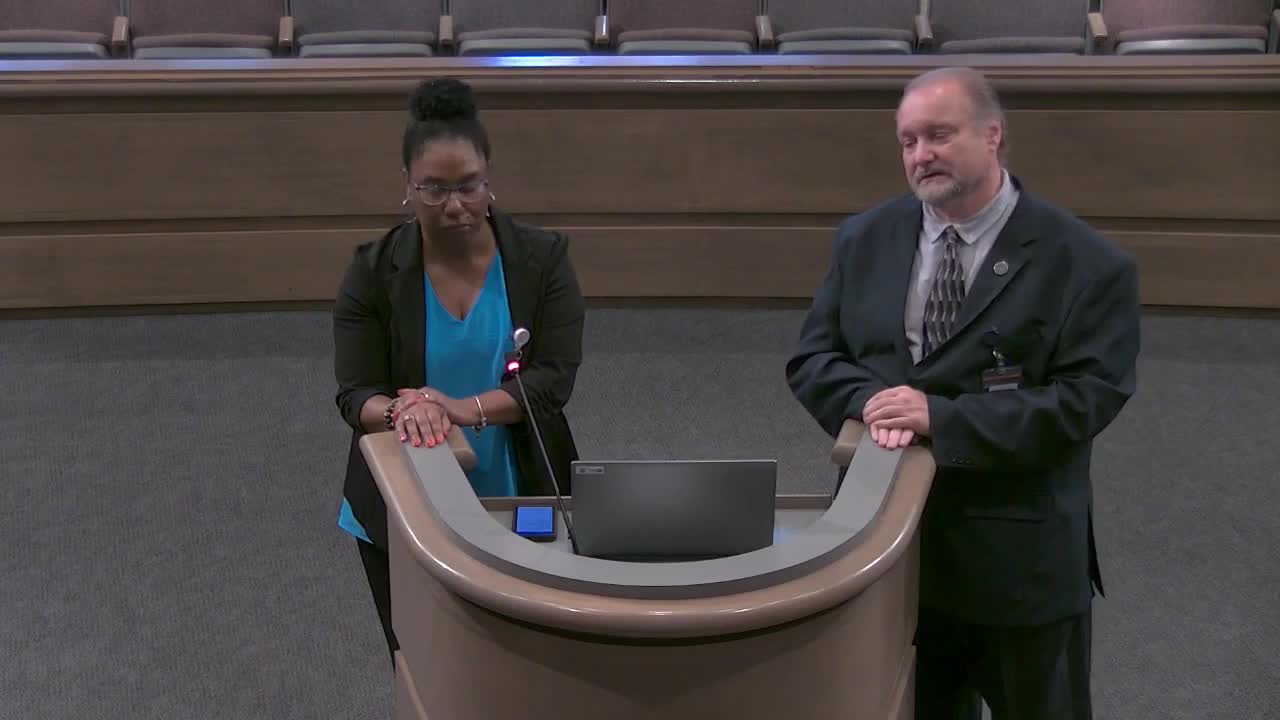Transitioning to Electric Vehicles Sparks Controversy Over Quotas
June 11, 2024 | Albany, Dougherty County, Georgia

This article was created by AI summarizing key points discussed. AI makes mistakes, so for full details and context, please refer to the video of the full meeting. Please report any errors so we can fix them. Report an error »

During a recent government meeting, officials discussed the implications of a grant application aimed at increasing the adoption of electric vehicles (EVs) within their fleet. A key point of contention was the requirement to meet a specific quota of EVs by a designated date in order to secure funding.
One official highlighted that their initial goal was to achieve a 30% transition to electric vehicles, which was later revised to 23% after further analysis. The discussion raised concerns about the financial implications of committing to this quota, particularly regarding the potential increase in costs associated with purchasing non-alternative fuel vehicles. The official questioned whether the additional costs of EVs would outweigh the benefits of the grant, emphasizing the risk of being locked into a commitment that could strain their budget.
The conversation also touched on the necessity of infrastructure, specifically the need for charging stations, to support the transition to electric vehicles. One participant noted that without adequate charging facilities, it would be challenging to gather data on the effectiveness and efficiency of EVs in their fleet.
Additionally, there was mention of a separate grant application with Albany State that could provide funding for up to 200 charging stations, which could alleviate some concerns about the financial burden of transitioning to electric vehicles.
Overall, the meeting underscored the complexities and challenges of integrating electric vehicles into government fleets, balancing the potential benefits of grant funding against the risks of increased costs and infrastructure needs.
One official highlighted that their initial goal was to achieve a 30% transition to electric vehicles, which was later revised to 23% after further analysis. The discussion raised concerns about the financial implications of committing to this quota, particularly regarding the potential increase in costs associated with purchasing non-alternative fuel vehicles. The official questioned whether the additional costs of EVs would outweigh the benefits of the grant, emphasizing the risk of being locked into a commitment that could strain their budget.
The conversation also touched on the necessity of infrastructure, specifically the need for charging stations, to support the transition to electric vehicles. One participant noted that without adequate charging facilities, it would be challenging to gather data on the effectiveness and efficiency of EVs in their fleet.
Additionally, there was mention of a separate grant application with Albany State that could provide funding for up to 200 charging stations, which could alleviate some concerns about the financial burden of transitioning to electric vehicles.
Overall, the meeting underscored the complexities and challenges of integrating electric vehicles into government fleets, balancing the potential benefits of grant funding against the risks of increased costs and infrastructure needs.
View full meeting
This article is based on a recent meeting—watch the full video and explore the complete transcript for deeper insights into the discussion.
View full meeting
